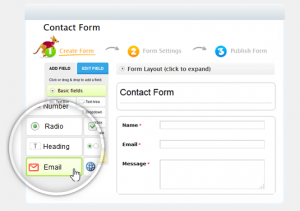— April 19, 2019
Personalization is supposed to be your secret weapon to cut through inbox clutter and capture the attention of your target customers. All studies and statistics point to the benefits of moving from generic messaging to highly-relevant, custom-made emails:
- 33% of marketers say personalization is the one capability that’s most important to the future of their work.
- 53% of marketers say personalized communications with customers results in moderate to significant revenue gains.
- Marketers report 20% sales increases when implementing personalized experiences.
It’s not difficult to find evidence that personalization improves customer experiences and generates business results.
Unfortunately, crafting and delivering personalized emails isn’t quite as easy. Before you can unlock the potential of email personalization, you need to overcome a few key challenges by setting yourself up for success with the right data.
3 Barriers to Email Personalization
For a long time, email personalization basically amounted to including “Hi, {First Name},” at the start of every message. And while that might have been good enough 5 or 10 years ago, it’s just an expectation now. Standing out in a crowded inbox requires much more.
But this isn’t news to marketers. The need for deeper personalization is clear. Making it happen is a different story.
The following 3 challenges keep many marketers from realizing the benefits of email personalization.
1. Data Silos
Everyone has the ability to craft a personalized email. You could dig into your CRM data and send a single message to a single customer to address a problem. But email personalization can’t just be a manual, one-to-one process if you want to reap the benefits.
To personalize emails at scale, you need all of your customer data integrated across systems. From your contact information to intent data, search data, purchase history, and beyond, you need the full context of individual relationships to properly personalize emails in larger volumes.
2. Content Relevance
Many marketers have taken steps beyond basic personalization by trying to segment email lists more thoroughly. However, the more specific you get with your segmentation, the harder it gets to create relevant content for each group.
In many cases, you’ll have a strong understanding of the context that led you to create a specific segment of your email list. But when it comes time to create the content, it can be difficult to analyze enough data to generate insights that inform thoughtful, relevant messaging.
3. Behavioral Context
One of the hardest aspects of email personalization is tracking customer behavior effectively. Your martech solutions help you understand how customers interact with your owned platforms and content. But when it comes to external behavior like interactions with competitors, you’re often left in the dark.
Without visibility into a wider array of behavioral data, you could miss out on opportunities to further engage your customers. Behavioral data is what will help you bring a human element to email personalization even when you’re sending messages at scale.
Solving Email Personalization with Intent Data
At the core of all these email personalization challenges is the need for better data.
When you have a foundation of quality data that integrates across your business systems, you’ll be able to focus your efforts on crafting personalized emails rather than constantly trying to further segment your lists. Working with a third-party provider can give you the intent data necessary to fuel email personalization.
Buyer intent data derives from research about individual buyer journeys and uses a variety of signals to understand the likelihood that prospects will buy from you. As opposed to traditional data used to segment email lists, intent data provides a more granular level of insight that can power personalization efforts.
There are three main types of intent data that can help you understand more about individual customers:
- Behavioral Intent: This type of intent data comes from the web browsing behavior of individual customers. Understanding which pages someone has visited on your website, which content they’ve downloaded, and at which point they leave your site will let you know where they are in the buyer’s journey.
- Search-Based Intent: So much of the buyer’s journey has become self-serve and search-based intent is a major part of that process. Knowing which keywords your prospects are using and which competitors they’re interacting with will give you an extra layer of information to personalize messaging.
- Social Intent: Social intent isn’t just about the interactions you have with individuals on Twitter, Facebook, and other platforms. It’s also about monitoring more general conversations that indicate where your prospects are in the buyer’s journey.
Rather than sending mass email blasts, you can tailor your efforts to specific marketing goals. If you’re looking to generate interest in a new product, you can personalize emails according to those prospects that are showing serious purchase intent. But when you’re focusing on building brand awareness, you can send emails to those on your list who are earlier in the buyer’s journey.
Using intent data to send high-quality, hyper-relevant emails will build trust with your subscribers. And over time, you’ll notice that open rates and conversion rates continuously improve because your customers know you’re not wasting their time.
The only problem is that collecting first-party intent data can be a significant challenge for the average marketing team. Third-party intent data has been available for years—but it’s difficult to know which vendors you can trust.
If you want to learn more about B2B intent data (and how to collect it reliably), download our free eBook, Demystifying B2B Purchase Intent Data.
Digital & Social Articles on Business 2 Community
(49)
Report Post



